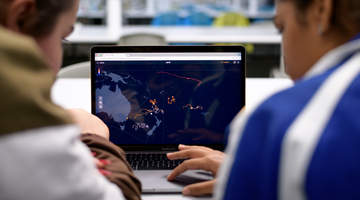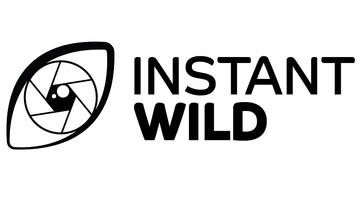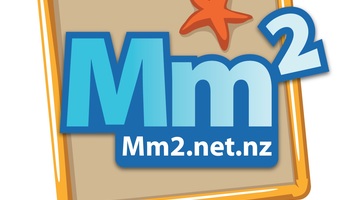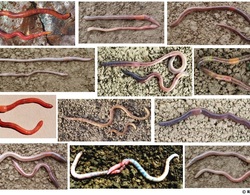

Glow-worms are New Zealand’s underground stars. Small but bright, it is no wonder why they attract so many tourists to places such as Waitomo and Paparoa National Park. Living things often have a ...
READ MORE

Imagine being able to smell your dinner from the other side of a sports field. Insects do this with the pair of antennae on their heads. But insects don’t only use their antennae to smell. They ...
READ MORE

Introduced wasps cause all sort of problems for people and native species, but did you know we have native wasps in New Zealand? Rights: Manaaki Whenua – Landcare Research, CC-BY 4.0 Certonotus ...
READ MORE

In this activity, students play a card game that models the journey of a male pea crab (a parasite of green-lipped mussels) from his mussel host and back again. Purpose This activity will help ...
READ MORE

In this activity, students consider some of the ethical issues involved with keeping earthworms (and other animals) captive in a classroom setting. By the end of this activity, students should be ...
READ MORE

The New Zealand cockle, also known as tuaki or tuangi, is endemic to Aotearoa New Zealand’s coastal areas. They are filter feeders and are well adapted to their preferred habitat of soft mud and ...
READ MORE

Although invisible to the naked eye, marine microbes drift continually in our ocean systems, quietly consuming up to 50% of the Earth’s CO2 through photosynthesis and producing nearly as much ...
READ MORE

Instant Wild is an initiative by the Zoological Society of London. Photos or videos of animals are recorded using hidden cameras in a range of worldwide locations. The aim is to increase the ...
READ MORE

Marine Metre Squared is a New Zealand citizen science project that supports communities to monitor their local seashore. The project has been designed to provide meaningful, valid environmental ...
READ MORE

To most of us, one earthworm resembles another. Although earthworms do have common characteristics, species differ widely in their size, skin colour and in the roles they play in the soil ...
READ MORE

Here are links to Science Learning Hub resources for primary teachers related to life cycles in the Living World strand of the New Zealand Curriculum. Explore the life cycles of birds ...
READ MORE

School science is engaging when it makes connections to students’ everyday lives (Osborne & Collins, 2001) and when they have an opportunity to experience physical phenomena first-hand – the ...
READ MORE
Like many marine animals, green-lipped mussels mate by broadcast spawning – the simultaneous release of eggs (from female mussels) and sperm (from male mussels) into the water. In this video ...
READ MORE
Mussels (including green-lipped mussels) are filter feeders – they process large volumes of the water they live in to obtain food. Filter feeding is a method of eating that is used by diverse ...
READ MORE
To mate, a male pea crab must leave the relative safety of his host mussel to seek out a female. In doing so, he is at risk of death by crushing (between the two shells of a mussel as it closes) ...
READ MORE

Learn more about introduced and native earthworms in Aotearoa New Zealand. Use the Slideshow menu for further options, including view full screen, and go here for the download option.
READ MORE

Use this Aotearoa New Zealand native butterflies slideshow to learn more about native butterfly habits and behaviour, then go butterfly hunting! Use the Slideshow menu for further options ...
READ MORE

The earthworm’s body is well adapted for life in the soil. Click on the labels to see images and learn more. Select the green button to see what’s on the inside of an earthworm. Go here to view ...
READ MORE